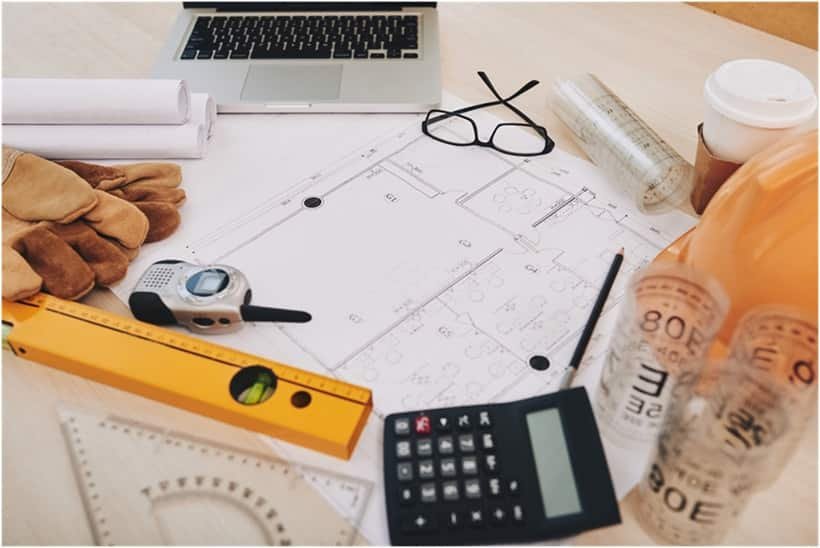Have you ever felt like you are juggling a million balls on a construction project? From materials and workers to permits and fees, it’s easy to get overwhelmed. Well, you are not alone.
The secret weapon to this convoluted process that can help you stay on top of things: figuring out your costs upfront.
Think of it like planning a road trip. You wouldn’t just hit the gas without knowing how much gas money you need, right? By getting a good handle on your project costs, you can:
- Win more jobs: When you show potential clients you understand what things will cost, they’re more likely to trust you with their project.
- Stay on budget: A good cost estimate helps you track your spending and avoid any nasty surprises down the line.
- Keep your clients happy: Nobody likes unexpected bills. By setting clear expectations from the start, you keep your clients informed and in the loop.
Key Cost Estimation Techniques for General Contractors
Now that you have understood why figuring out costs is your secret weapon, let’s dive into the toolbox and explore the different ways you can estimate project costs like a pro.
There are three main types of estimates, each used at different stages of a project:
- Feasibility Study: This is a quick check to see if your idea is worth moving forward with. It’s like a first draft before you write a whole story. It helps you figure out if something will work before you spend a lot of time and effort on it.
- Budget Estimate: Think of this as a more detailed sketch. It gives you a better idea of the overall cost range, but it’s not set in stone.
- Definitive Estimate: This is your final, detailed blueprint. It’s as close to the actual cost as possible and is used for bidding and project management.
Picking the Right Tool for the Job: Cost Estimating Methods Explained
So you’ve got different types of estimates for different project stages. In this section, let’s take a look at the three main methods general contractors use to actually crunch the numbers:
-
Parametric Estimating: Leveraging Historical Data
Parametric estimating utilizes historical data and statistical models to generate cost estimates. Imagine having access to a vast database of similar projects, allowing you to extrapolate costs based on factors like square footage or building type.
- Strengths: Offers a rapid and efficient approach, particularly valuable for early-stage project planning.
- Weaknesses: Accuracy can be limited, and historical data for highly comparable projects is necessary.
-
Analogous Estimating: Learning from Past Projects
This method draws upon past experiences with similar projects. Analogous estimating involves referencing the costs of comparable completed projects and using them as a benchmark for the current project.
- Strengths: Offers a more accurate assessment compared to parametric estimating, particularly beneficial for projects with similar designs.
- Weaknesses: Relies heavily on a thorough understanding of past projects and might not be ideal for unique designs.
-
Bottom-up Estimating: Building it Up Brick by Brick
Bottom-up estimating breaks down the project cost piece by piece. Imagine meticulously calculating the cost of each individual element, from materials and labor to equipment rentals. The sum of these individual costs establishes the total project cost.
- Strengths: Provides the most accurate estimate and offers a granular breakdown of project costs.
- Weaknesses: This method can be time-consuming and necessitates a significant amount of detailed project information.
Building Your Rock-Solid Cost Estimate: A Step-by-Step Guide
So you’ve unlocked the secrets of cost estimating methods. Now let’s put that knowledge to work and build a bulletproof estimate for your next project. Here’s a breakdown of the key steps involved:
-
Taking Off on the Right Foot: Mastering Quantity Takeoffs
Imagine you’re a carpenter estimating the lumber needed for a house. A quantity takeoff is like your blueprint for materials. It involves meticulously measuring and calculating the exact amount of each material required for the project. This ensures you avoid overspending or running short on supplies halfway through.
-
Factoring in the Workforce: Labor Costs
Your crew is the backbone of any project. When calculating labor costs, consider factors like:
- Wages and benefits: How much will you pay your workers, and what benefits do you offer?
- Productivity: How efficiently can your crew complete the tasks?
-
Material Matters: Understanding Material Costs
Building materials can fluctuate in price depending on the market. It’s crucial to factor in current market prices and account for potential price changes throughout the project.
-
Equipping Yourself for Success: Equipment Costs
Do you need to rent any special equipment for the project? Consider costs associated with rentals, transportation, and operating the equipment.
-
Don’t Forget the Extras: Overhead Costs
There are always additional expenses beyond materials and labor. Overhead costs include permits, insurance, temporary facilities like portable toilets, and other miscellaneous fees.
By carefully considering these five elements, you will be able to build a robust and reliable cost estimate much seamlessly.
Power Up Your Estimating Skills: Essential Tools and Resources
Now that you’ve aced the fundamentals of cost estimating, let’s explore the comprehensive range of tools and resources available to general contractors:
-
Software Savvy: Cost Estimating Software
Imagine having a powerful assistant that automates calculations, stores historical data, and helps you generate professional-looking estimates. Cost estimating software is your secret weapon in the digital age. These programs can significantly streamline the process, improve accuracy, and save you valuable time.
-
Building a Knowledge Base: Construction Cost Databases
Let’s say you have a ton of valuable information on construction costs at your fingertips. Construction cost databases provide valuable insights into historical project costs, material pricing trends, and regional labor rates. This information can be a game-changer when building your estimates.
-
Staying Informed: Industry Publications and Cost Indexes
The construction industry is constantly evolving. Industry publications and cost indexes keep you updated on the latest trends, material price fluctuations, and economic factors that can impact project costs. By staying informed, you can ensure your estimates are as accurate and up-to-date as possible.
Beyond the Numbers: Polishing Your Cost Estimate into a Gem
So far, in this blog post, we have covered the nuts and bolts of building a solid cost estimate. Now, let’s elevate your estimate to the next level.
Here are a few key considerations to take your estimates from good to great:
The Local Lowdown: Accounting for Regional Variations
Firstly, depending on the location, construction costs can vary significantly. Imagine building a house in a bustling city like New York compared to a suburban area. Labor rates, material availability, and even permit fees can differ. By factoring in local market adjustments, you ensure your estimate reflects the realities of your project’s specific location.
Project Puzzles: Considering Complexity and Challenges
No construction project goes exactly according to plan. There can be unforeseen challenges, such as unexpected site conditions or design modifications. To mitigate these risks, consider incorporating a buffer in your estimate to account for potential complications. This will greatly help you avoid scrambling if curveballs get thrown your way.
Planning for the Unforeseen: Building in a Contingency
Construction projects aren’t exactly a cakewalk. Even the most meticulous plans can encounter unexpected costs. That’s where contingency planning comes in. By allocating a buffer in your estimate, you’ll have some extra room to address unforeseen expenses without blowing your entire budget. Think of it as a financial safety net for your project.
The Power of Precision in Cost Estimating
Mastering cost estimation techniques is key for any successful general contractor. Precise estimates empower you to:
- Secure Contracts with Confidence: Accurate cost estimates demonstrate your ability to deliver projects within budget, making you a highly competitive bidder.
- Maintain Financial Control: A well-defined cost estimate serves as a roadmap for project finances, enabling proactive management and mitigation of potential cost overruns.
- Foster Client Satisfaction: Transparency in cost expectations from the outset builds trust and fosters long-term client relationships.
The journey of effective cost estimating is a continuous process of learning and refinement. By embracing ongoing education and leveraging the latest tools and resources, you can elevate your estimating skills to new heights, ensuring the success of your projects and your reputation within the construction industry.
Ready to take your cost estimating skills to the next level? Here at Russell and Dawson Inc., we offer resources to help you succeed.
Subscribe to our newsletter: Receive regular updates on the latest trends and tools in construction cost estimating.
Take control of your projects and build a solid foundation for success. Visit our website or contact us today to learn more!











